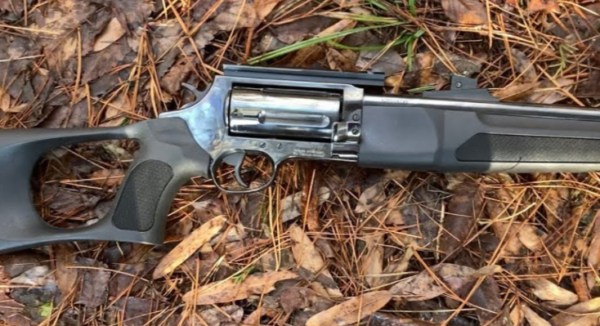The Charter Arms Pathfinder is a popular revolver, known for its affordability and compact design. However, it’s not without its fair share of issues.
In this article, we will delve into the Charter Arms Pathfinder Problems, aiming to shed light on the challenges users often encounter.
The Charter Arms Pathfinder Problems, while not insurmountable, can present significant challenges for users, and understanding these issues is key to ensuring a hassle-free experience with this firearm.
Charter Arms Pathfinder Problems

1. Cylinder Alignment Issues
Cause
One common problem with the Charter Arms Pathfinder is the cylinder alignment issue.
This problem typically arises due to wear and tear over time, especially if the firearm is not properly maintained.
Misalignment of the cylinder can lead to decreased accuracy and, in more severe cases, dangerous firing conditions.
Solution
To rectify cylinder alignment issues, it is recommended to seek professional gunsmithing services.
A knowledgeable gunsmith can assess the situation, realign the cylinder, and provide advice on future maintenance to prevent reoccurrence.
Regular cleaning and proper storage are key preventative measures that can extend the life of your firearm and ensure it functions safely and accurately.
2. Frequent Misfires
Cause
Frequent misfires in the Charter Arms Pathfinder are often attributed to faulty firing pins or issues with the ammunition.
Defective firing pins may fail to strike the round with the necessary force, resulting in a misfire.
Similarly, low-quality or incorrect ammunition can also lead to frequent misfires, as the firearm may not be designed to handle the specifications of such rounds.
Solution
Addressing frequent misfires generally involves replacing the faulty firing pin or using the correct ammunition.
Inspection and replacement of the firing pin should be performed by a professional gunsmith to ensure correct installation and avoid potential harm.
On the other hand, using high-quality ammunition that matches the firearm’s specifications can considerably reduce the likelihood of misfires.
Regular inspection of the firearm, especially the firing pin and ammunition, is a crucial preventive measure.
3. Trigger Mechanism Failures
Cause
Trigger mechanism failures in the Charter Arms Pathfinder are usually a result of damage or excessive wear and tear to the trigger assembly.
These issues can manifest in various ways, such as trigger stiffness, a non-responsive trigger, or trigger slippage.
Poor maintenance and handling, coupled with prolonged use, can exacerbate these issues, resulting in a compromised firing experience.
Solution
Rectifying trigger mechanism failures generally involves a complete inspection and servicing of the trigger assembly by a professional gunsmith.
The gunsmith may need to clean, lubricate, adjust, or replace parts in the trigger assembly to restore its function.
Regularly servicing your firearm and using it within its design limits can considerably prolong the life of the trigger mechanism and enhance the overall performance of your firearm.
4. Loose Handgrip
Cause
A loose handgrip on the Charter Arms Pathfinder typically originates from prolonged use, improper storage, or exposure to harsh conditions.
Over time, the screws securing the grip may loosen, resulting in an unstable grip that can affect the accuracy and safety of the firearm.
Furthermore, the grip material may degrade or warp due to environmental factors such as extreme temperatures or moisture, leading to an even looser fit.
Solution
The solution to a loose handgrip involves tightening the grip screws and possibly replacing the grip if its material has degraded.
A correct-size screwdriver should be used to tighten the screws and secure the grip. If the grip itself is compromised, a replacement grip that fits the model should be installed.
Regular inspection of the handgrip and proper storage can prevent such problems in the future. As always, if you’re unsure, consult a professional gunsmith for assistance.
5. Cylinder Lock-Up
Cause
The Cylinder Lock-Up issue in the Charter Arms Pathfinder can be typically traced back to the overuse of the firearm, lack of regular maintenance, or simply the aging of the revolver.
The lock-up issue arises when the cylinder ceases to rotate or gets stuck, obstructing the rotation of the chamber to line up the next round for firing.
This can lead to malfunctioning of the firearm, posing a potential risk to the user’s safety.
Solution
The most effective resolution for Cylinder Lock-Up issues is seeking professional help from a skilled gunsmith who can diagnose the problem accurately and rectify it effectively.
This could involve cleaning the cylinder, replacing worn parts, or even overhauling the entire cylinder mechanism.
Regular maintenance and proper care of the firearm can greatly help prevent cylinder lock-up issues, ensuring smoother operation and longer lifespan of the Charter Arms Pathfinder.
It is always recommended to handle firearms with caution and respect their design limits to avoid such problems in the future.
6. Ejector Rod Problems
Cause
The Ejector Rod Problems in the Charter Arms Pathfinder can result from multiple factors including wear and tear, improper cleaning, and mishandling of the firearm.
Over time, the ejector rod might become misaligned or bent due to heavy usage or accidental drops, causing difficulties in ejecting spent casings.
Furthermore, the buildup of residue can stiffen the rod, hampering its smooth operation.
Solution
The primary solution to Ejector Rod Problems is professional examination and servicing. A gunsmith can determine if the rod needs to be cleaned, straightened, or replaced.
Regular cleaning of the ejector rod area can prevent residue buildup while handling the firearm with care and can avoid physical damage to the rod.
Remember, regular maintenance and appropriate handling are crucial in preserving the functionality of not only the ejector rod but the entire firearm.
7. Difficulty in loading
Cause
Difficulty in loading the Charter Arms Pathfinder is frequently a consequence of obstructions in the cylinder, misalignment of the chamber, or issues with the speed loader.
Residue buildup in the cylinder can obstruct the path of the bullets, causing difficulties during loading.
Over time, regular wear and tear can lead to misalignment of the chamber, making it difficult for the rounds to sit properly.
Speed-loaders may also become faulty or incompatible, impeding the smooth loading of rounds.
Solution
To address these problems, regular and thorough cleaning of the cylinder can help remove any obstructions caused by residue buildup.
If the problem persists, the chamber may need realignment by a professional gunsmith.
8. Barrel Integrity Issues
Cause
Barrel integrity issues in the Charter Arms Pathfinder can arise due to a variety of factors, most commonly misuse, improper cleaning, or simply the aging of the firearm.
Over time, the barrel can accumulate fouling or corrosion, leading to inconsistent accuracy and potential safety concerns.
Excessive shooting without sufficient cooling periods can overheat the barrel, resulting in warping or cracking.
Furthermore, using ammunition of incorrect caliber or poor quality can also contribute to barrel integrity issues, causing undue stress on the barrel.
Solution
Maintaining the integrity of the barrel involves consistent cleaning after each use, using a suitable bore cleaner and a correctly sized cleaning rod.
This helps to remove any fouling or corrosion and prevents damage to the rifling inside the barrel. Proper handling and use of the firearm, including allowing adequate cooling periods between sessions and using the correct ammunition, are crucial.
In cases where the barrel is significantly damaged or worn, it should be replaced by a professional gunsmith to ensure safety and performance.
Regular inspection and maintenance of the barrel are vital in preserving its integrity and enhancing the firearm’s overall lifespan.
9. Accuracy Inconsistencies
Cause
Accuracy inconsistencies in the Charter Arms Pathfinder can stem from several factors, including improper sight alignment, barrel integrity issues, and loose handgrip.
In some cases, the sight may be misaligned, which can significantly throw off the shot’s accuracy.
In others, the barrel may be compromised due to wear and tear, misuse, or improper cleaning, causing inconsistency in the bullet’s pathway.
Finally, a loose handgrip may result in instability during shooting, leading to inconsistent accuracy.
Solution
To rectify accuracy inconsistencies, it’s essential to ensure proper sight alignment.
This can be achieved by periodically checking and adjusting the sight as necessary. Any issues with the barrel should be addressed promptly, either through proper cleaning, repair, or replacement to maintain the bullet’s true trajectory.
If the handgrip is loose, it’s advisable to tighten the screws or replace the grip entirely. By maintaining a firm and stable grip, one can significantly improve the firearm’s accuracy.
Regular inspection and maintenance, coupled with proper handling techniques, can prevent or rectify accuracy inconsistencies.
10. Hammer Spring Tension
Cause
The Hammer Spring Tension in the Charter Arms Pathfinder can often be negatively impacted by prolonged use, improper handling of the firearm, or a lack of regular maintenance.
Over time, the hammer spring may lose its tension, leading to unreliable ignition of the primer, which can affect the performance and safety of the firearm.
Further, improper disassembly and reassembly during maintenance can cause the hammer spring to be improperly seated, further affecting its tension.
Solution
The primary solution to problems with Hammer Spring Tension is to seek professional assistance from a qualified gunsmith.
They can accurately diagnose whether the issue lies with the spring’s tension and if it needs replacement or reseating.
Regular maintenance and cleaning are critical to ensuring the spring’s longevity and performance, as is correct handling during disassembly and reassembly.
Proper use and handling of the firearm can prevent undue wear and tear on the hammer spring, maintaining its tension and ensuring the reliable operation of the Charter Arms Pathfinder.
Excessive Recoil
11. Problems with Sights
Cause
Problems with the sights on the Charter Arms Pathfinder can emerge from various sources.
These may include misalignment from wear and tear, incorrect installation of aftermarket sights, or damage as a result of improper handling or falls.
The sight picture might become unclear or skewed due to these issues, leading to inaccurate targeting and compromised shooting performance.
Regular use and exposure to harsh conditions can also cause the sights to lose their original alignment, posing challenges in accurate targeting.
Solution
Addressing sight problems often necessitates meticulous examination and correction by a professional gunsmith. If the sights are misaligned, they may need to be realigned or replaced, depending on the extent of the issue.
A professional should always install aftermarket sights to ensure correct alignment and fit. Regular maintenance and cleaning can prevent damage from harsh conditions and preserve the sights’ longevity and performance.
Proper handling and storage of the firearm can prevent accidents that may damage the sights, thereby ensuring consistent and accurate performance.
12. Firing Pin Failures
Cause
Firing pin failures in the Charter Arms Pathfinder can occur due to various reasons such as prolonged usage, lack of maintenance, or exposure to harsh conditions.
The firing pin, crucial for igniting the primer to fire the bullet, can get worn out over time or may not be correctly seated due to improper handling or cleaning.
In some cases, the firing pin may become damaged due to exposure to water or other environmental elements, leading to reduced performance and reliability.
Solution
Maintaining the firing pin requires regular inspection and cleaning after each use. This helps prevent fouling or corrosion which can cause issues with seating the pin in the firearm.
More, proper handling and use of the firearm are essential in preserving its performance and longevity.
In cases where the firing pin is damaged or worn, it should be replaced by a professional gunsmith to ensure safety and accuracy.
Regular inspection and maintenance of the firing pin can go a long way in preventing failures and ensuring reliable operation.
13. Finish Durability Problems
Cause
Finish durability issues in the Charter Arms Pathfinder can arise due to various factors such as prolonged exposure to harsh environmental conditions, improper handling and storage, or lack of regular cleaning and maintenance.
Environmental factors such as extreme heat, cold, or moisture can degrade the firearm’s finish over time, leading to a decrease in aesthetic appeal and potentially compromising its functionality.
Furthermore, improper handling and storage can lead to scratches or chips in the finish, while a lack of regular maintenance can cause a buildup of dirt and corrosion, further deteriorating the finish.
Solution
Addressing finish durability problems primarily involves regular preventive maintenance and proper handling and storage.
Cleaning the firearm after every use and applying a suitable gun oil can help protect the finish from environmental damage and buildup of dirt or corrosion.
Storage in a dry, temperature-controlled environment can also help preserve the finish. If the finish is already significantly damaged, it may need to be professionally refinished or replaced.
Remember, regular care and maintenance is the key to preserving the finish and overall longevity of the Charter Arms Pathfinder.
14. Difficulty in Disassembly for Maintenance
Cause
Difficulty in disassembly for maintenance of the Charter Arms Pathfinder can stem from a combination of factors.
These primarily include unfamiliarity with the firearm’s specific disassembly process, lack of experience with firearms maintenance in general, or physical complications such as rusted or stuck parts.
Over time, parts may seize together due to lack of lubrication or presence of dirt and grime, making disassembly challenging.
Solution
A comprehensive understanding of the firearm’s structure and disassembly process is essential in mitigating difficulties in disassembly for maintenance.
The firearm’s manual provides step-by-step instructions and should be reviewed thoroughly. Moreover, online guides and videos can provide visual aids. Using proper tools and working in a clean, well-lit environment can significantly ease the process.
For seized or rusted parts, products like penetrating oils can be helpful. However, if difficulties persist, it is advisable to seek assistance from a professional gunsmith to avoid causing damage to the firearm.
Regular maintenance can prevent the seizing of parts and ensure an easier disassembly process in the future.
Conclusion
While the Charter Arms Pathfinder is a resilient and reliable firearm, potential problems can emerge from various causes.
Regular maintenance and proper handling are essential in preserving the firearm’s performance and longevity.
Further, understanding the structure and disassembly process thoroughly is important for addressing potential issues or performing maintenance on the firearm.
By following a few simple steps, you can help ensure that your Charter Arms Pathfinder remains safe and reliable for many years to come.
FAQs
Who makes Charter Arms firearms?
Charter Arms firearms are manufactured by Charter Arms, an American company that specializes in producing handguns.
The company was founded in 1964 by Doug McClenahan, with its headquarters located in Shelton, Connecticut.
Does Charter Arms make a 22 Magnum revolver?
Yes, Charter Arms does produce a .22 Magnum revolver. Among their offerings is the Pathfinder series of revolvers, which includes models chambered in .22 Magnum.
Where are Charter Arms guns made?
Charter Arms guns are made in the United States, specifically in their manufacturing facility located in Shelton, Connecticut. This ensures consistent standards of quality and craftsmanship across their range of firearms.
What frame is Charter Arms Undercover?
The Charter Arms Undercover is built on a compact frame, specifically designed for concealed carry, making it ideal for personal defense. It’s a five-shot revolver that’s known for its durability and lightweight design.
Charter Arms Pitbull 9MM Problems


Biographical Info: Waseem1001, Owner of My Guns Geek
Name: Waseem1001
Email: wwwfffwww117@gmail.com
Mailing Address: Cooker Insider, 4773 Sigley Road, White Cloud, KS 66094
About Waseem1001
Welcome to My Guns Geek, your gateway to the world of firearms and everything related. Meet the person who is passionate about firearms, gear, and the responsible ownership of guns. Waseem1001, the owner of My Guns Geek, is here to provide you with a wealth of information and insights.
A Lifelong Fascination
Waseem1001’s fascination with firearms and outdoor gear began at an early age. Whether it was admiring the craftsmanship of firearms or exploring the utility of outdoor equipment, the world of guns and gear always held a special place in his heart. This deep-rooted passion eventually led to the creation of My Guns Geek.
Our Mission
At My Guns Geek, our mission is to empower gun enthusiasts and outdoor enthusiasts with accurate and comprehensive knowledge.
Waseem1001 values your feedback, questions, and suggestions. Your engagement and contributions are vital in shaping the future of My Guns Geek.
Thank you for being a part of the My Guns Geek community, and Waseem1001 looks forward to sharing this exciting journey with you.


